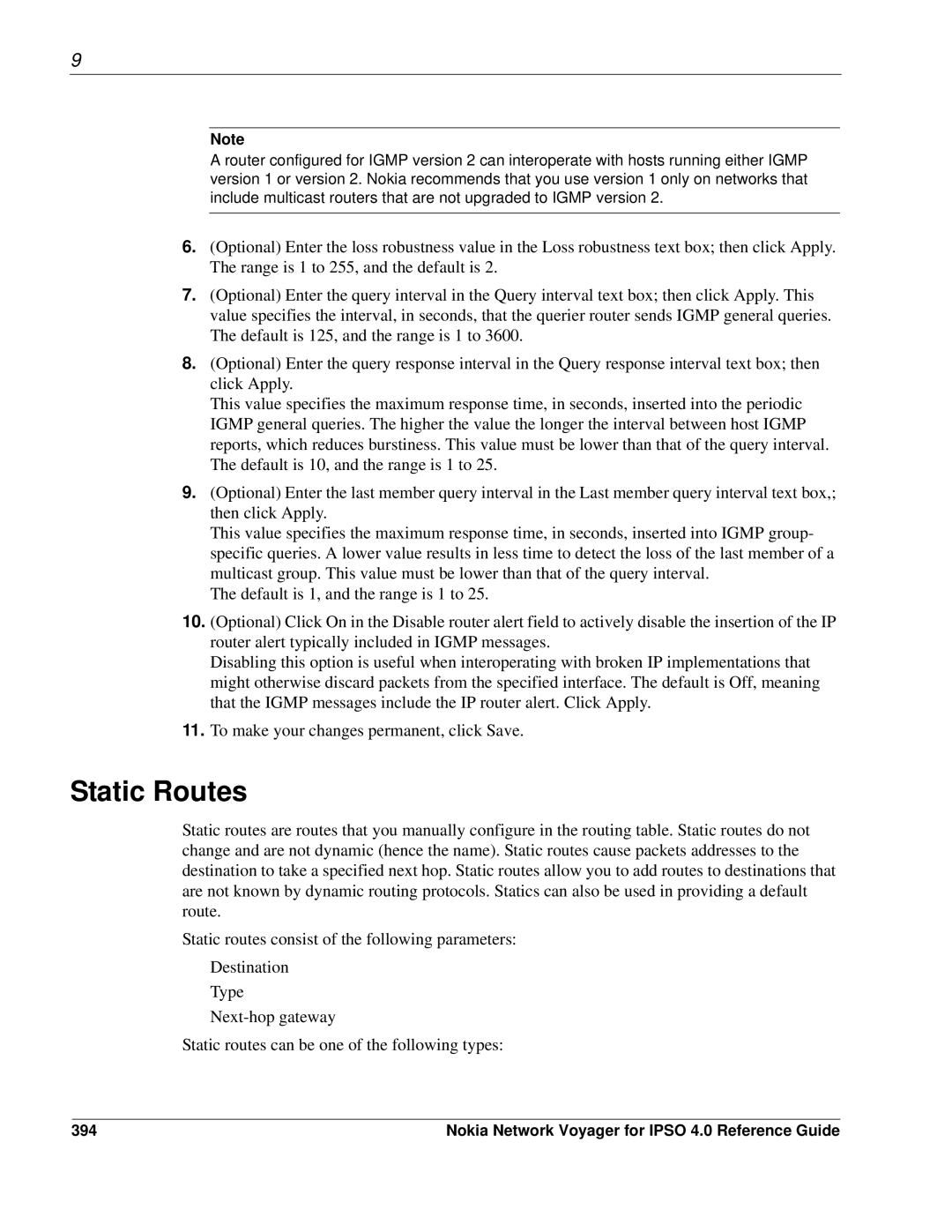
9
Note
A router configured for IGMP version 2 can interoperate with hosts running either IGMP version 1 or version 2. Nokia recommends that you use version 1 only on networks that include multicast routers that are not upgraded to IGMP version 2.
6.(Optional) Enter the loss robustness value in the Loss robustness text box; then click Apply. The range is 1 to 255, and the default is 2.
7.(Optional) Enter the query interval in the Query interval text box; then click Apply. This value specifies the interval, in seconds, that the querier router sends IGMP general queries. The default is 125, and the range is 1 to 3600.
8.(Optional) Enter the query response interval in the Query response interval text box; then click Apply.
This value specifies the maximum response time, in seconds, inserted into the periodic IGMP general queries. The higher the value the longer the interval between host IGMP reports, which reduces burstiness. This value must be lower than that of the query interval. The default is 10, and the range is 1 to 25.
9.(Optional) Enter the last member query interval in the Last member query interval text box,; then click Apply.
This value specifies the maximum response time, in seconds, inserted into IGMP group- specific queries. A lower value results in less time to detect the loss of the last member of a multicast group. This value must be lower than that of the query interval.
The default is 1, and the range is 1 to 25.
10.(Optional) Click On in the Disable router alert field to actively disable the insertion of the IP router alert typically included in IGMP messages.
Disabling this option is useful when interoperating with broken IP implementations that might otherwise discard packets from the specified interface. The default is Off, meaning that the IGMP messages include the IP router alert. Click Apply.
11.To make your changes permanent, click Save.
Static Routes
Static routes are routes that you manually configure in the routing table. Static routes do not change and are not dynamic (hence the name). Static routes cause packets addresses to the destination to take a specified next hop. Static routes allow you to add routes to destinations that are not known by dynamic routing protocols. Statics can also be used in providing a default route.
Static routes consist of the following parameters:
Destination
Type
Static routes can be one of the following types:
394 | Nokia Network Voyager for IPSO 4.0 Reference Guide |
